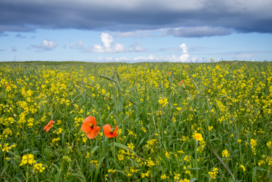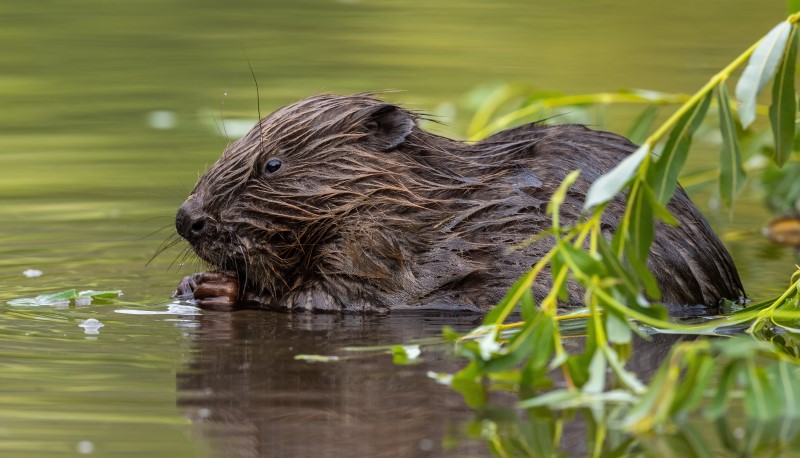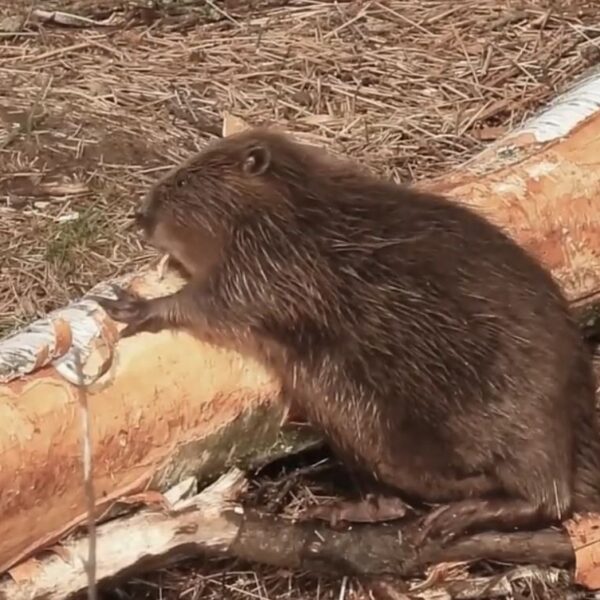Rewilding
Rewilding means enabling nature's recovery, whilst reflecting and respecting Scotland's society and heritage, to achieve more resilient and autonomous ecosystems.
Rewilding actions can vary in size and effort and have the potential to provide alternative income to farmers and land managers including ecotourism or carbon credits.
Rewilding actions include things like:
- The physical reintroduction of keystone species
- The creation of habitats on farm to create wildlife corridors
- Allowing the natural regeneration of woodlands
- Reversing the historic manipulation of rivers with re-meandering or fish barrier removal.
The Farm Advisory Service will be releasing information on the different types of rewilding, how farmers across Scotland are currently interacting with them, and where to find out more information if you want to get involved or have concerns.
Rewilding is part of a set of terms and approaches to landscape and nature management; it differs from other approaches in seeking to enable natural processes which eventually require relatively little management by humans.
As with all landscape management, rewilding should be achieved by processes that engage and ideally benefit local communities, in line with Scotland's Land Rights and Responsibilities Statement, to support a Just Transition.
You can read more about how ScotGov came to their definition of rewilding here.

The Farm Advisory Service are working to highlight how rewilding and the agriculture sector can coexist and thrive in appropriate, managed conditions. There are many case studies, which highlight how farmers can embrace rewilding onto their land.
Rewilding Beavers In Scotland
The Eurasian Beaver (Castor fiber) is a large semi-aquatic rodent that has been reintroduced to Scotland after being hunted to extinction here in the 16th century. Fossil and archaeological evidence suggests that they were previously widespread throughout mainland Scotland. Reintroductions have also taken place in many other European countries and the species has now recovered much of its original range following near total extinction at the start of the 20th century.
As Scotland’s beaver population continues to expand, appropriate management and mitigation will be required and these will be guided by Scotland’s Beaver Strategy. It is important to find ways of accommodating beavers and mitigating any negative impacts that they might have on land management. The strategy outlines a beaver management process that land managers should follow:
- Accommodate
- Mitigate
- Translocate
- Control


Evidence suggests that the Eurasian beaver was once widespread throughout mainland Scotland, and re-introductions are already taking place. Read more on the history of beavers in Scotland and beaver ecology.
Beavers are well established in Scotland now and it is therefore important to find ways of accommodating beavers and mitigating any negative impacts that they might have on land management.
The management of beavers in their current location will generally be more cost-effective and at a lower risk than moving them. Under the Beaver Management Framework actions to accommodate and mitigate beaver impacts must be prioritised before any direct intervention to remove the species is considered. Translocation & Licencing are the next stages on the management framework, and are carried out under license by professionals when the previous management measures are not preventing serious damage to people, the environment and/or wildlife.
In this guide we outline the implications for farmers of this protection for three of the key species. It provides information about the situations where farmers need to be aware of the law and the licensing process that allows activities to be safely carried out without risk of breaking the law.
The playlist below will help you better understand how farmers and land managers can co-exist with beavers in Scotland. The videos in the series cover:
Thrill of the Hill Podcast - A Damming Conclusion?
Beavers and their presence in Scotland continues to divide the agricultural community, for some they generate hope for a more nature-rich Scotland and more dynamic landscape, for others they cause damage and threaten the viability of various farm enterprises. In Part 1, we heard a passionate take on the issue from Euan Walker-Munro who articulated the frustration felt by many in the industry. In Part 2, we hear from Professor Davy McCracken and cover the positives around beaver reintroduction, the ecology of the species and the opportunities brought by them.
Sign up to the FAS newsletter
Receive updates on news, events and publications from Scotland’s Farm Advisory Service
